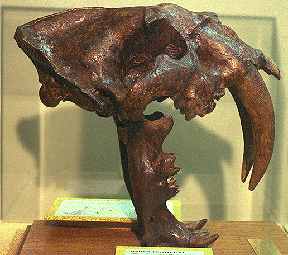
November 13, 2002 Seattle, Washington - Tonight at the University of Pennsylvania Museum of Anthropology and Archaeology, scientists gathered to discuss what killed off so many large mammals of North and South America at the end of the last ice age about 12,000 years ago, the end of the Pleistocene. At least 35 genera of animals in North America alone were wiped out, including the huge saber-toothed cat, woolly rhinos, woolly mammoths, mastodons, giant skunks, giant rabbits, camels and horses. Using modern DNA analysis, bodies and bones found freeze-dried are being explored for signs of unusual disease. Did a deadly virus or bacteria infect and kill the animals? Or did a growing human population throughout the world exterminate species after species in its search for food and hides?
Click here to subscribe and get instant access to read this report.
Click here to check your existing subscription status.
Existing members, login below:
© 1998 - 2024 by Linda Moulton Howe.
All Rights Reserved.

